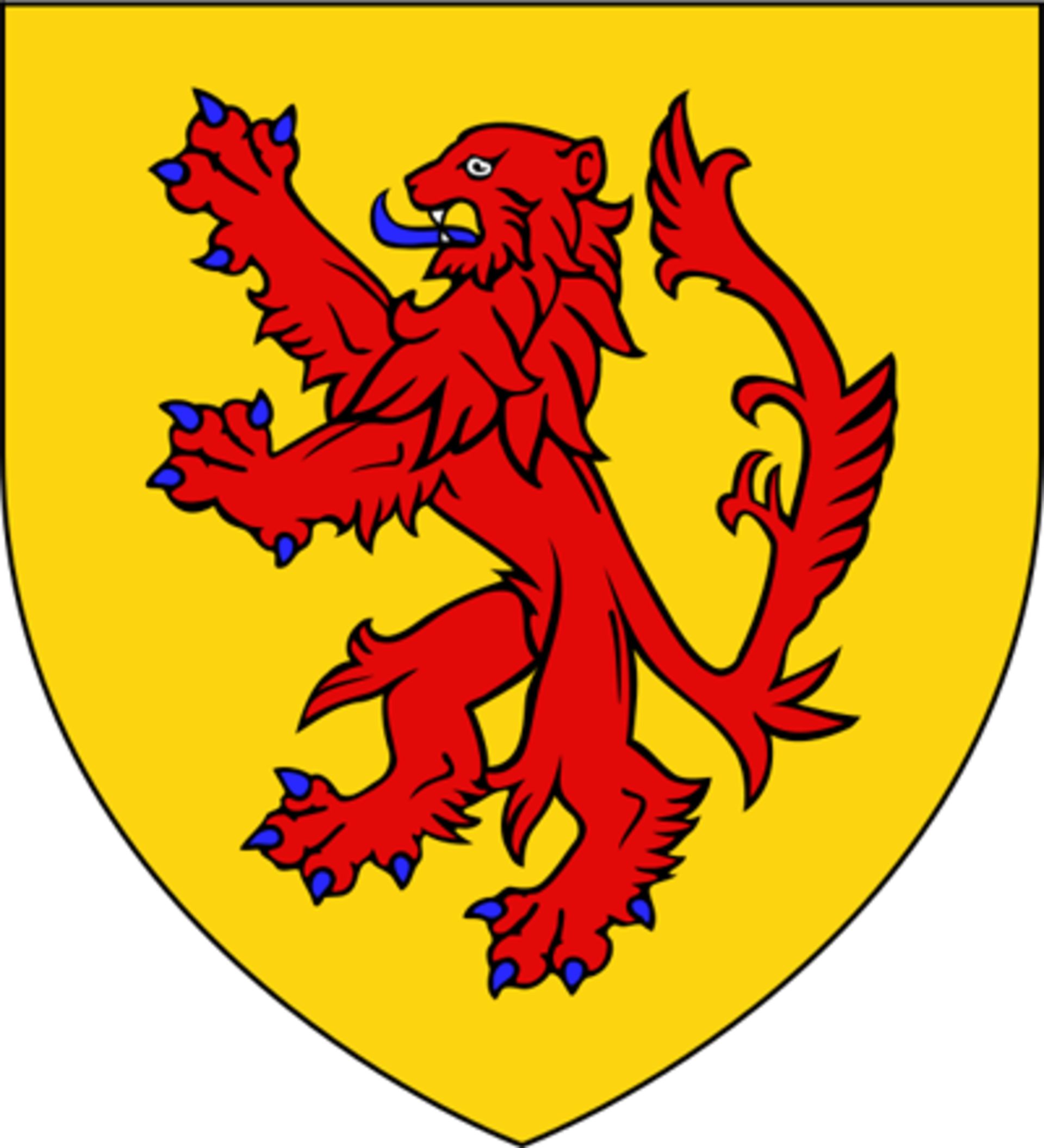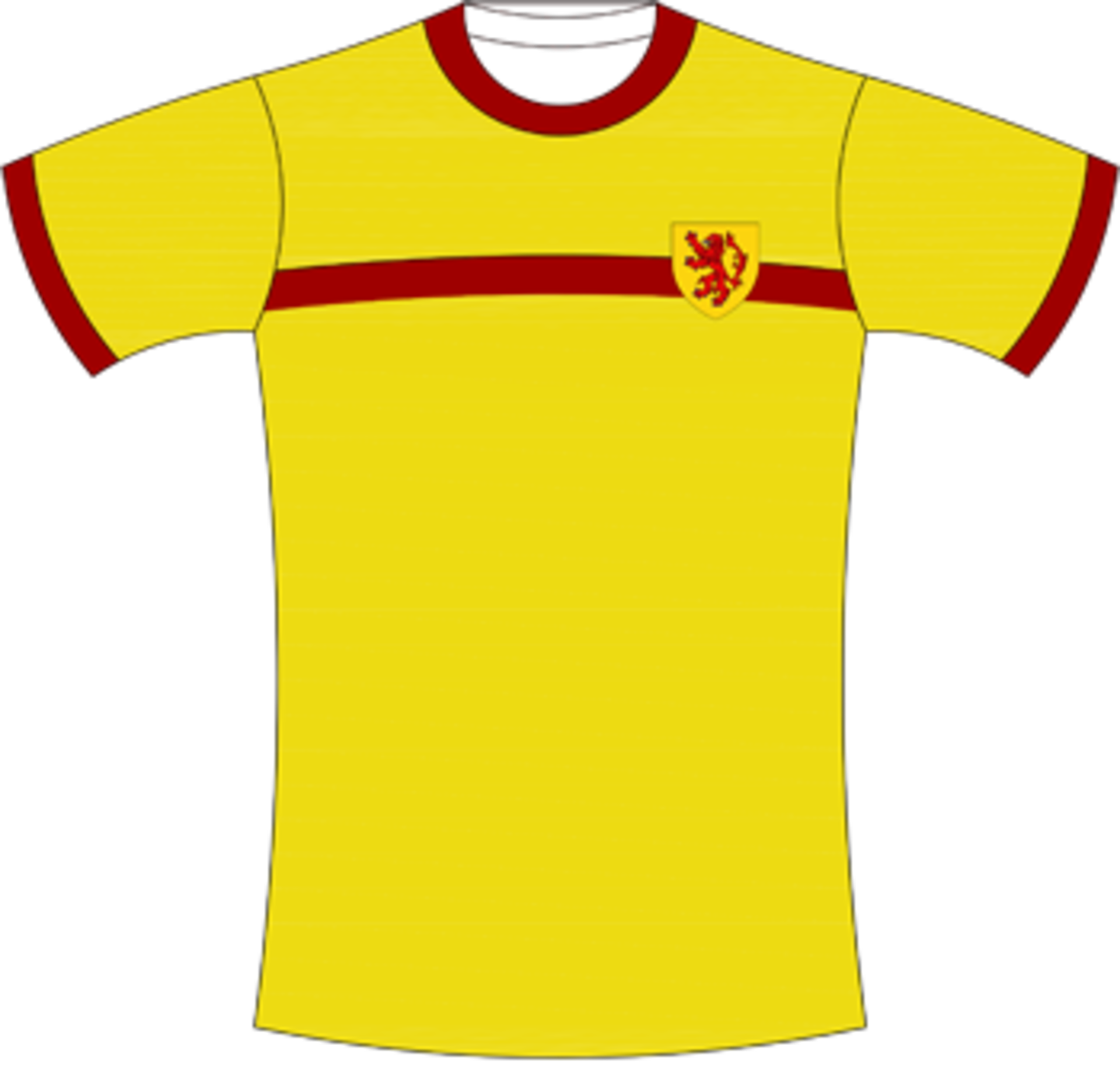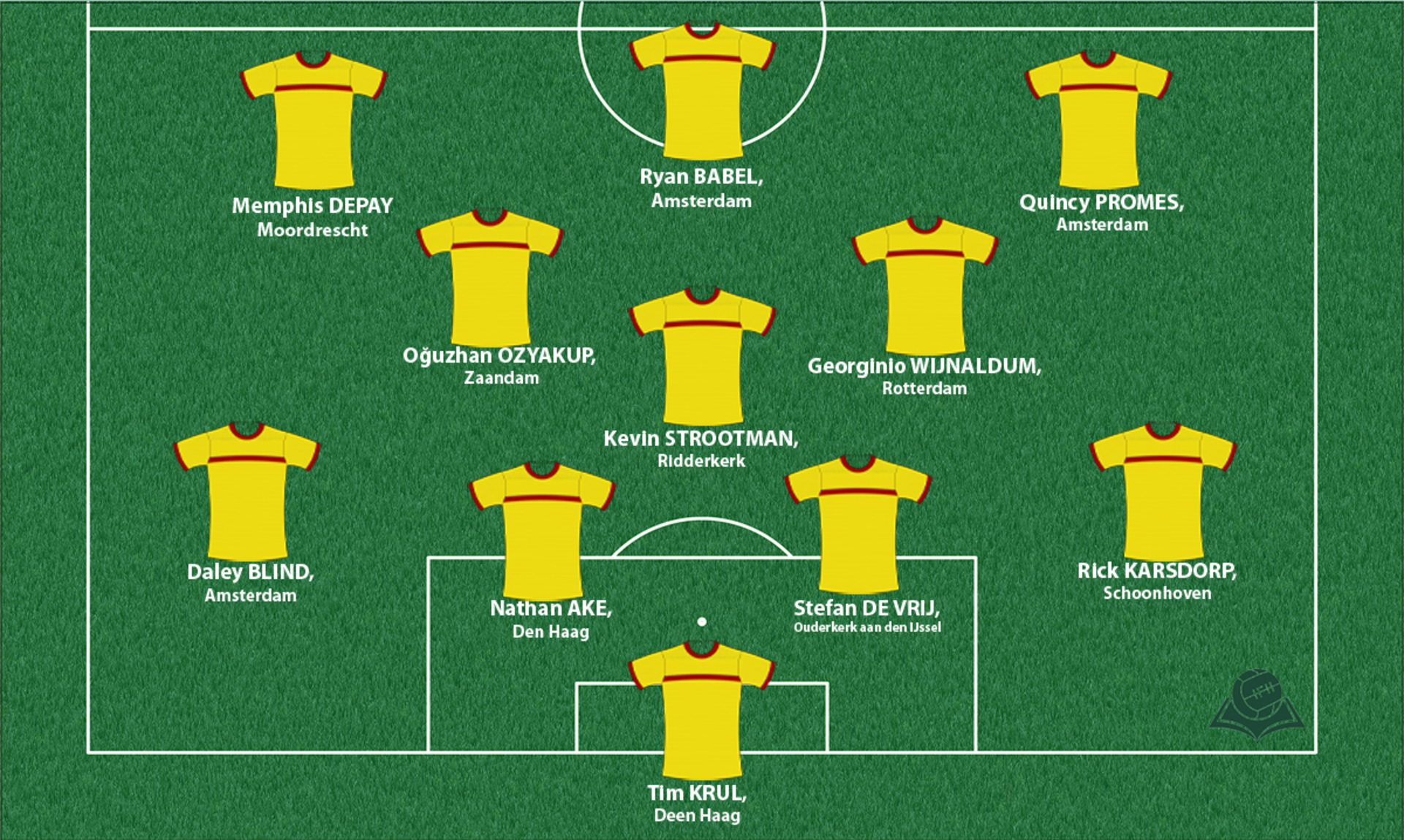County of Holland
The County of Holland, comprising of cities such as Amsterdam and Rotterdam, constituted a small but economically powerful, part of the Habsburg lands in Burgundy. Its elites would, in the context of expanding the Reformation in the second half of the 16th century, begin their decades-long process of gaining independence from the central rule in Madrid.

Coat of arms

Shirt
| Position | First name | Last name | Mjesto rođenja | Like | Dislike | |
|---|---|---|---|---|---|---|
| GK | Marteen | STEKELNBURG | Haarlem |
1 |
0 |
|
| GK | Sergio | PADT | Amsterdam |
2 |
0 |
|
| GK | Tim | KRUL | Den Haag |
1 |
0 |
|
| DC | Jeffrey | BRUMA | Rotterdam |
2 |
0 |
|
| DC | Matthijs | DE LIGT | Leiderdorp |
2 |
0 |
|
| DC | Stefan | DE VRIJ | Ouderkerk aan den IJssel |
4 |
1 |
|
| DC | Wesley | HOEDT | Alkmaar |
2 |
0 |
|
| DRC | Joel | VELTMAN | Velsen |
1 |
0 |
|
| DLC/DMC | Daley | BLIND | Amsterdam |
5 |
1 |
|
| DLC/DMC | Jairo | RIEDEWALD | Haarlem |
1 |
0 |
|
| DLC/DMC | Nathan | AKE | Den Haag |
2 |
0 |
|
| DR | Daryl | JANMAAT | Leidschendam |
2 |
0 |
|
| DR | Kenny | TETE | Amsterdam |
2 |
1 |
|
| DR | Rick | KARSDORP | Schoonhoven |
1 |
0 |
|
| DRC/DMC | Timothy | FOSU-MENSAH | Amsterdam |
1 |
0 |
|
| DMC/DC | Frenkie | DE JONG | Arkel |
3 |
0 |
|
| MC | Georginio | WIJNALDUM | Rotterdam |
4 |
2 |
|
| MC | Kevin | STROOTMAN | Ridderkerk |
4 |
1 |
|
| MC | Leroy | FER | Zoetermeer |
1 |
0 |
|
| MC | Oğuzhan | ÖZYAKUP | Zaandam |
2 |
0 |
|
| MC | Ruud | VORMER | Hoorn |
1 |
0 |
|
| MLC | Tonny | VILHENA | Maassluis |
2 |
0 |
|
| AMC | Davy | KLAASEN | Hilversum |
2 |
0 |
|
| AMRL | Anwar | EL GHAZI | Barendrecht |
1 |
0 |
|
| AMRL | Jeremain | LENS | Amsterdam |
1 |
1 |
|
| AMRL | Justin | KLUIVERT | Zaandam |
2 |
0 |
|
| AMRL | Memphis | DEPAY | Moordrecht |
2 |
0 |
|
| AMRL | Quincy | PROMES | Amsterdam |
3 |
2 |
|
| AMRL/FC | Steven | BERGHUIS | Apeldoorn |
1 |
0 |
|
| FRLC | Steven | BERGWIJN | Amsterdam |
2 |
0 |
|
| FLC | Ryan | BABEL | Amsterdam |
2 |
0 |
|
| FC | Robin | VAN PERSIE | Rotterdam |
4 |
0 |
(Today part of: provinces of South and North Holland)
The area that the Renaissance humanists named Belgica, and the Habsburgs “the Low Countries” – from which the later name of “the Netherlands” (Neder-landen) would originate – was, in truth, a series of mutually independent duchies, counties, and prince-bishoprics (Holland, Zeeland, Brabant, Liege, Flanders, etc.). They were also known as the Seventeen Provinces that started to bond with one another in the political sense when they came under the supreme rule of the House of Valois of Burgundy, at the end of the 14th century. Their power was succeeded by that of the House of Habsburg in 1482, i.e. its Spanish branch from the mid-16th century. The Spanish Habsburgs introduced repressive politics in order to stem the Reformation and the aspirations for autonomy from their nobility and middle classes. This led to a revolt in 1569, headed by William of Orange, and followed by the secession of the northern provinces, and the formation of the so-called Utrecht Union (1580). The southern provinces, or Southern Netherlands, stayed under the Habsburg rule.
The new state was formed from a number of old feudal jurisdictions with a deeply rooted tradition of municipal autonomy, and as such could barely be called a state. The House of Orange represented the only unifying element, having clients and followers everywhere, and holding the hereditary role of Stadtholder (appointed royal governor) of Holland and Zeeland, so the United Provinces became an alliance of sovereign states, although without an official proclamation of them being such. Holland, which possessed well developed commercial harbours of Rotterdam and Amsterdam, instituted something resembling hegemony over the majority of other provinces, so foreigners began to generally refer to the whole state as “Holland”. The war to recognise their independence would be fought over the next few generations, and finally ended in 1648.
Sources
- Felipe FERNANDEZ-ARMESTO, Narodi Europe, Zagreb, 1997.
- Grupa autora, Povijest: Doba apsolutizma (17. stoljeće), knjiga X., Zagreb 2008.
- Alexander BUCZYNSKI, ''Nizozemska multikultura'', http://www.matica.hr/hr/347/NIZOZEMSKA%20MULTIKULTURA/
- ''Dutch Republic'', https://en.wikipedia.org/wiki/Dutch_Republic;
- ''Gallia Belgica'', https://en.wikipedia.org/wiki/Gallia_Belgica#Belgica_as_the_name_of_the_Low_Countries
- ''Netherlands'', https://en.wikipedia.org/wiki/Netherlands;
- Seventen Provinces'', https://en.wikipedia.org/wiki/Seventeen_Provinces
